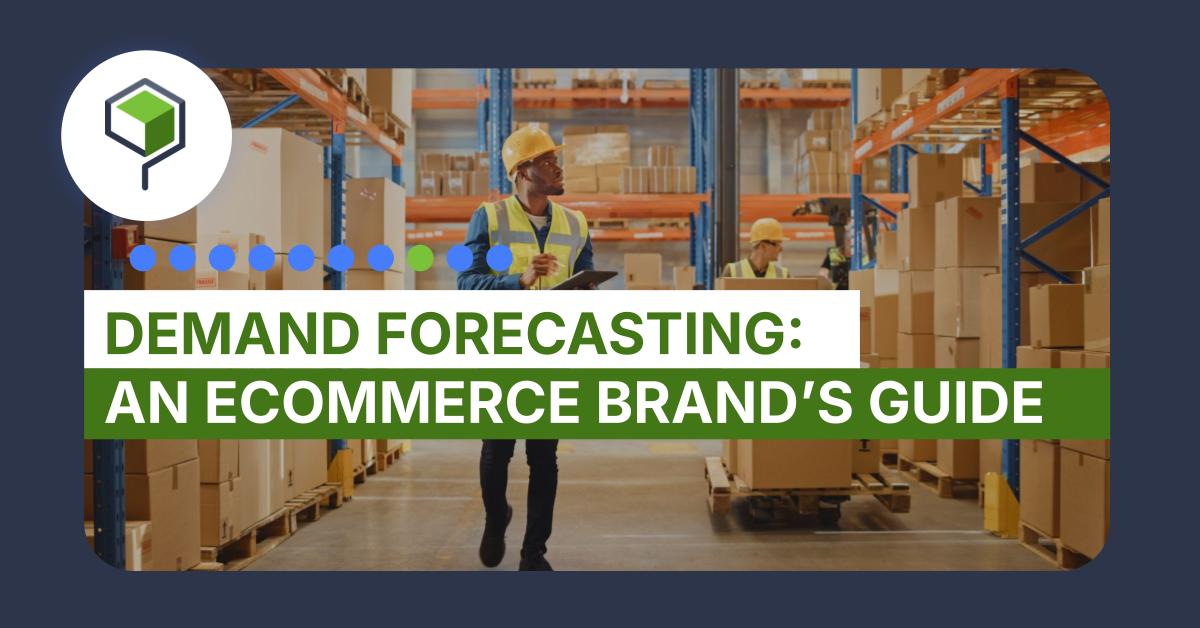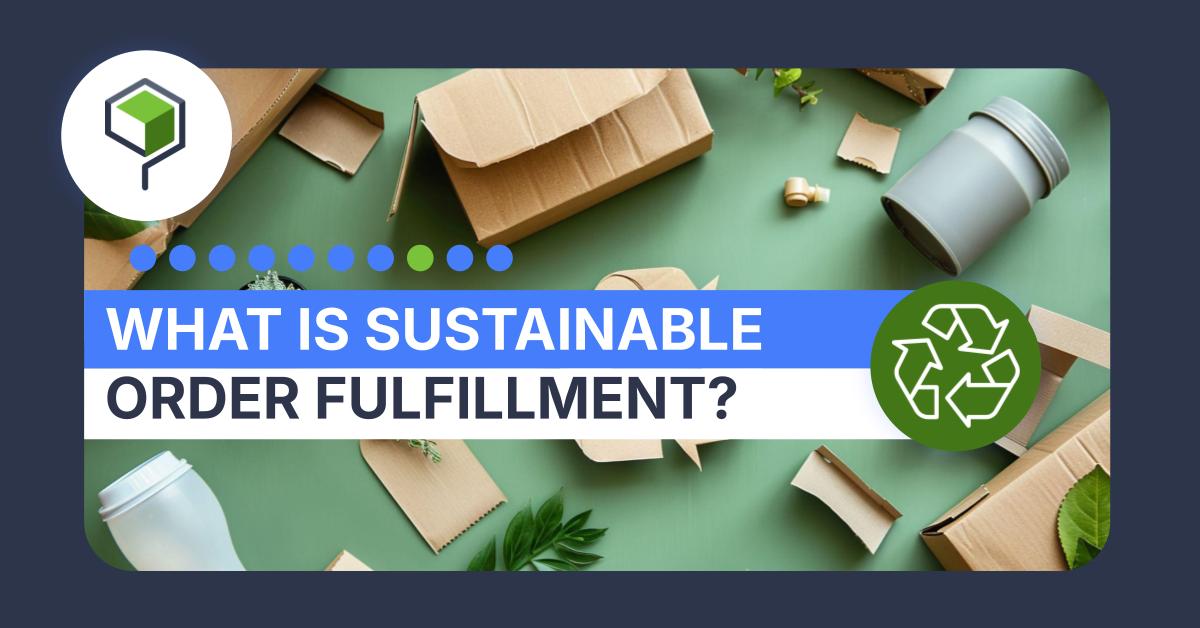Walmart Fulfillment in 2024: What’s the Deal for Sellers?

[Updated post from June 22, 2022]
Many ecommerce merchants find order fulfillment difficult. Self-fulfillment is expensive and is prone to error. 53% of businesses’ fulfillment expenses rose in 2020, according to Statista.
Personnel, insurance, and warehousing space are driving up shipping costs. Working with a fulfillment service provider helps sellers build their business. With Amazon offering its FBA service, Walmart decided to offer its own fulfillment service: Walmart Fulfillment Services (WFS).
Walmart’s Fulfillment Services can streamline order management for businesses. WFS offers fast delivery at reasonable shipping rates and can be a great way to scale your business.
Walmart first launched Walmart Fulfillment Services in 2020, so it’s still a relative newcomer to the eCommerce fulfillment space. WFS is a rival service to Fulfilled By Amazon (FBA) which uses a similar workflow and pricing model.
How do Walmart Fulfillment Services (WFS) work?
Walmart Fulfillment Services (WFS) is a set of outsourced fulfillment services that allows Walmart marketplace sellers to outsource order fulfillment and inventory management to Walmart. Sellers will store their products in Walmart fulfillment centers until orders are placed. Walmart then handles order processing, fulfillment, and the shipping of orders to the end customer.
Put simply, WFS allows marketplace sellers to take advantage of their massive logistics network and achieve sought-after delivery timeframes while taking off the pressure of managing fulfillment. Walmart charges fulfillment and storage fees to marketplace sellers who want to use their services, which offers a convenient, pay-for-what-you-need approach to pricing.
What fulfillment services are included in WFS?
Inventory storage. Walmart sellers can store their merchandise in Walmart’s nationwide fulfillment center network, allowing them to position inventory as close as possible to their customers.
Order fulfillment. Walmart handles to entire pick, pack, and ship workflow on your business’s behalf. When a customer order comes in, Walmart is responsible for allocating that order to the appropriate facility to ensure the fastest delivery timeframe.
Shipping. Sellers using WFS are eligible for Walmart’s Two-day Shipping offer, which helps to boost conversions in the same manner as Prime Shipping on Amazon’s platform.
Returns management. Walmart’s Free and Easy Returns program allows sellers to leverage Walmart’s returns capability instead of creating their own policy, which can be a great workaround for new sellers.
Who is eligible for WFS?
To benefit from Walmart Fulfillment Services, you need to be a current Walmart Marketplace seller. There is also a series of product requirements that your merchandise needs to meet to be stored/fulfilled by Walmart facilities:
- Products can be no more than 500 lbs in weight or exceed product dimensions of 120″ x 105″ x 93″
- Walmart fulfillment centers accept orders for domestic shipments only.
- Goods must be non-perishable and not on the Restricted Products list
While Walmart fulfillment services don’t currently have any minimum requirements for inventory counts or product assortment, they do recommend that Walmart sellers select a least 50 items for continual replenishment to maximize the value of the service. This being said, it’s ultimately up to you to decide how much/what products you want to commit to fulfilling via WFS.
What fees are associated with WFS?
Walmart Fulfillment Services divides its fees into two basic categories: storage fees and fulfillment fees. There are also additional fees based on the time of year, the type of product, and product size.
Standard WMS fulfillment fees
- 1 lb.: $3.45
- 2 lb.: $4.95
- 3 lb.: $5.45
- 4–20 lb.: $5.75 (plus $0.40 for each lb. > 4 lb.)
- 21–30 lb.: $15.55 (plus $0.40 for each lb. > 21 lb.)
- 31–50 lb.*: $14.55 (plus $0.40 for each lb. > 31 lb.)
- ≥51 lb.*: $17.55 plus ($0.40 for each lb. > 51 lb.)
Additional WMS fulfillment fees
- Apparel: Add $0.50
- Hazardous materials: Add $0.50
- Retail price less than $10: Add $1
Oversize items:
- Longest side greater than 48″ and up to 96”: Add $3
- Longest side greater than 96″ and up to 108” or longest side + girth greater than 130″ and up to 165”: Add $20
Monthly storage fees
January–September: $0.75 per cubic foot per month
October–December (peak season):
- For items stored for fewer than or up to 30 days: $0.75 per cubic foot per month
- For items stored for more than 30 days: Add $1.50 per cubic foot per month
- 12 months: Up to $7.50 per cubic foot per month
Big & Bulky Fulfillment Fee
Shipping weight up to 500 lb.: $155 + $0.80 per lb. > 90 lb.
The pros of Walmart Fulfillment Services
Scalable fulfillment
Thanks to the size of Walmart’s fulfillment center network, it’s very easy for a seller to grow their fulfillment operation and leverage Walmart’s expertise and capabilities, without running into the growing pains that are common in self-fulfillment operations. As sellers find themselves needing storage space or adding more product listings, they can simply increase the amount of space they need and pay for more order prep services.
Simple pricing
Outsourced fulfillment can be full of hidden fees or confusing price structures that make it difficult to understand what your business is actually paying for. WFS makes it easy to understand the cost of fulfillment by dividing costs into storage fees and fulfillment fees. Using their calculator, sellers can provide weight and product dimensions to find out how much any item will cost to store and fulfill using Walmart fulfillment centers.
Rapid shipping methods
Not surprisingly, Walmart’s two-day shipping and free shipping capabilities are key selling points for Walmart marketplace sellers. Considering that the likes of Amazon and Walmart are responsible for setting (and catering to) online shoppers’ fast shipping expectations, leveraging these capabilities is one of the easiest ways for eCommerce merchants to meet customer expectations in this area.
Marketplace visibility
Walmart’s program is more than just a logistics service. One of the ways that Walmart Fulfillment Services has attracted sellers is by offering better marketplace visibility to potential customers. The two-day Delivery and Fulfilled By Walmart tags on product listings translate to an average sales increase of 50%, according to Walmart itself.
Customer and business support
Because WFS is responsible for handling customer inquiries, refunds, and returns in addition to fulfillment, this takes a lot of pressure off Walmart sellers, especially new sellers or smaller merchants who don’t have customer care capabilities in-house.
The Cons of Walmart Fulfillment Services
Restricted to domestic shipments
As of right now, WFS only fulfills and ships domestic Walmart orders. So, if you also have products listed for sale in other countries, such as Canada or Mexico, you will need to find another fulfillment service. While hybrid order fulfillment certainly has its benefits, it requires more effort to administer.
Product eligibility requirements
Walmart does set restrictions for maximum product dimensions and weight, which may exclude some sellers from using the service. All eligible items also need to meet strict packaging and labeling requirements to avoid additional fees, which can change without warning and put additional pressure on sellers.
Loss of branding opportunities
Just like FBA, WFS orders are shipped using Walmart-branded packaging, meaning that sellers are out on valuable opportunities to build brand recognition and loyalty. So far as the customer is concerned, they’ve just made another Walmart purchase – which is not what you want if you’re working to build out other sales channels.
Return costs
Although Walmart takes responsibility for managing returns on your behalf, sellers can still incur additional fees, such as restocking fees and return shipping fees. These fees can add up quickly, especially during return-heavy periods like the holiday season. This may mean needing to sell a very high volume of goods in order to maintain healthy margins, as long-term storage fees can also prove very costly.
How to set up Walmart Fulfillment Services
If you aren’t already a Walmart Marketplace vendor, you will need to sign up. The details you will need include:
- U.S. Business Tax ID
- Product catalog breakdown, size, and SKU count
- How you plan to add your product catalog to the platform e.g. bulk upload, API, external, or suppliers.
Sign in to your Seller Center account and use the WFS link in the marketplace dashboard to start.
- Walmart reviews your app. If accepted, you must switch to Fulfilled by Walmart.
- Any product you want to enroll must be available on Walmart Marketplace.
- Next, send your products to Walmart fulfillment facilities to be stored until a customer orders.



